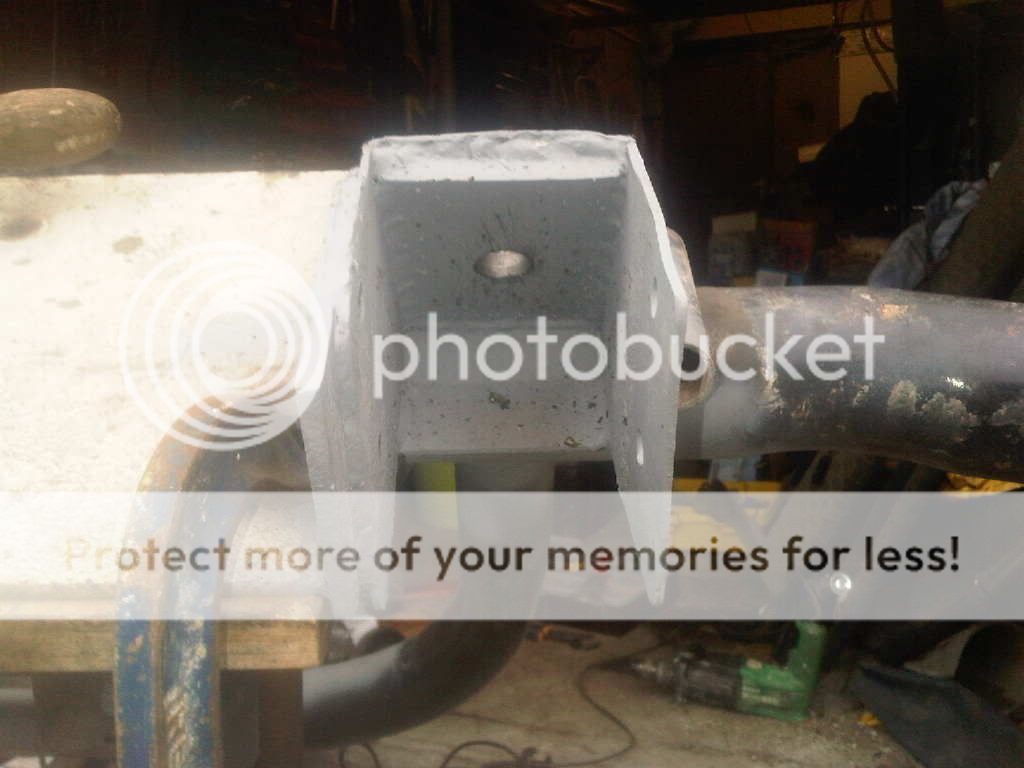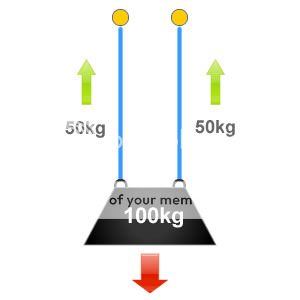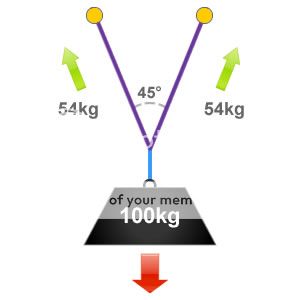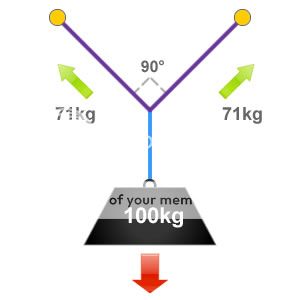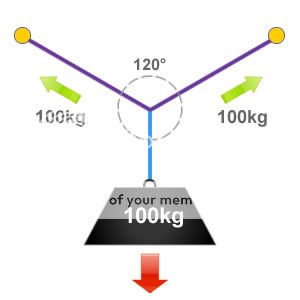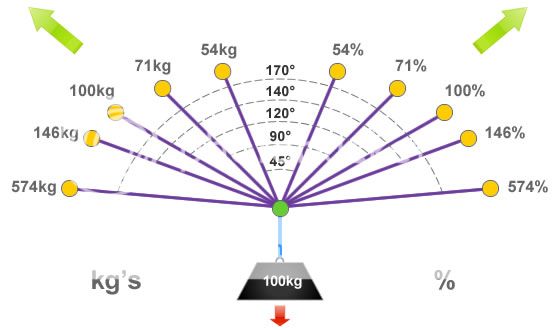Nrgserv, way to go dude, not badvand very close, assuming the optimal bridle angle of 45 degrees is achieved.
Answer explained
Let's use a simple force of pull of 100kgs.
A single strop to a single recovery point exerts a force of 100kgs.
Now lets use two strops. If two strops are connected to two points on both vehicles then you get a shared force as there are no internal angles. As below.
Now lets use the bridle. As the internal angle between the recovery strops increase then additional forces (vector forces) begin to be applied to each sling / anchor point.
When rigging recovery strops the 'ideal angle' is approximately 45°, at the ideal angle there would be 54% of the applied force being distributed to each recovery point. Although this is over half of the original weight of the pulling force, we have still gained an advantage by sharing it between the two anchor points.
Now lets see what happens when we alter the internal angle. An internal angle of 90° between strops is sometimes referred to as the 'OK' angle. At this angle 71% of the pulling force will be distributed to each recovery point, so in this example that will be 71kg.
It is often easier to roughly estimate a 90° or right-angle when undertaking rigging tasks. By staying at or below this angle ensures that we don't load our recovery points with excessive forces.
Now we have a critical angle. A basic way to understand the effect of vector forces is to imagine that if a full circle equates to 360° and this was split into three equal parts we would end up with three angles of 120°, as show in the illustration below. An internal angle of 120° is also defined as the 'critical angle'.
Because everything is in equilibrium at the critical angle of 120°, whatever the pulling force, this is what we will be exerting to each recovery point and each item of rigging equipment. So in this example it is 100kg or 100% of the pulling force.
Once you past the critical angle, the pulling force to each recovery point is increased and the image below explains that.
So the you go. Next time you think about tugging hard on a rope with another land rover, think about how you are exerting the forces. A land rover exerting 8 tonnes in the wrong configuration can actually exert almost 46 tonnes to your recovery points.
Phew


